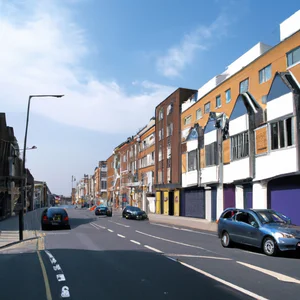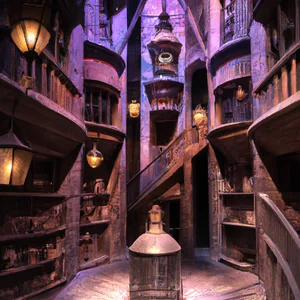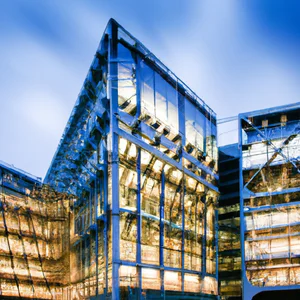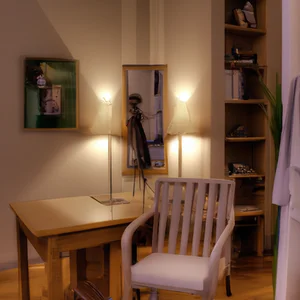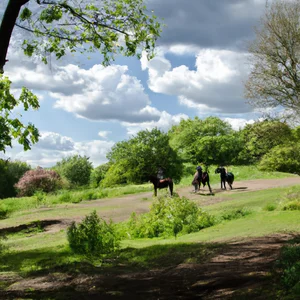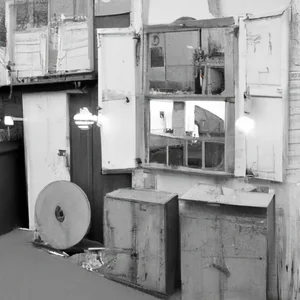Book your experience
Security in London
Safety in London: some tips to enjoy the capital without worries
So, let’s talk about London, this city that captivates you and makes you feel a bit like a fish out of water, right? It is a fantastic place, but, as in all metropolises, there are some things to keep in mind to enjoy a peaceful stay. Personally, the first time I went there, I felt a little lost. Do you remember when you were a child you went into a candy store and didn’t know where to start? Here, more or less the same feeling.
Let’s start by saying that London is, in general, a rather safe city. But, as in any large city, there are some areas that are best avoided, especially at night. Maybe I wouldn’t go there alone after dark, huh? I’ve heard stories of friends who, after an evening in Soho, took a slightly longer ride back to the hotel and, in short, it wasn’t exactly the best of ideas. I advise you to be careful, in short.
Another thing I learned is to always keep an eye on your belongings. I don’t know if you’ve ever lost something important, but it’s a real pain in the ass. In London, pickpockets can be a bit like ninjas, they walk around you and, poof, steal your wallet. So, please use a bag that you can close well and maybe put your phone in your pocket, so it’s not in plain sight.
Then, here’s some advice a friend gave me: try to plan your trips. Use public transport, which is super efficient! But, be careful, it is not uncommon that the subway can be a little crowded, especially during rush hours. Do you remember the time I got stuck between two people while trying to get off Piccadilly Circus? An experience that I wouldn’t even wish on my worst enemy!
And, oh, another gem I’ve discovered is not to immediately trust anyone who gets too close. Maybe they all seem to be smiling, but there are also those who are trying to sell you something or, worse, scam you. In short, if someone approaches you with a dazzling smile and a strange proposal, it’s better to run away as if you’ve seen a ghost!
In conclusion, London is a wonderful city full of life, but, as in all things, a little caution never hurts. I think that with a little attention and the right spirit of adventure, your stay will be unforgettable. And, who knows, maybe you’ll go home with some funny anecdotes. Have a good trip!
Navigating London: safety on public transport
An unforgettable journey
On my first trip to London, I remember riding the Tube for the first time. As I walked down the escalators, the frenetic atmosphere enveloped me. People of every nationality, each with their own destiny, moved with a determination that seemed almost contagious. But at that moment, a thought crossed my mind: Is it safe? The answer is yes, but there are some simple precautions that can make your trip even smoother.
Practical information on public transport
London boasts one of the most efficient public transport networks in the world, including tubes, buses and trains. According to Transport for London (TfL), the Tube offers a smooth and safe service, with 95% of travelers feeling safe while traveling. However, it is important to be aware of some practices:
- Check times: the Tube does not operate 24 hours a day, so plan your trips in advance.
- Use the Oyster Card: this reloadable card not only saves you money, but also offers you greater security, as it avoids carrying cash.
- Be aware of rush hour: If possible, avoid traveling during peak hours (8:00-9:30 and 17:00-18:30) for greater convenience and safety.
An insider tip
A secret that few people know: Many visitors don’t know that Tube stations have security personnel and assistance in case of emergencies. Don’t hesitate to contact them if you need help, or even just to ask for directions. They are there to ensure your safety and can provide helpful tips.
The cultural impact of the Tube
The London Underground is not just a means of transport, but a cultural symbol. It is famous for its iconic stops and the art that surrounds it, including the famous “Mind the Gap” campaign posters. This expression has become part of the collective London language, representing the need to pay attention and awareness, an important lesson for every traveler.
Sustainable practices
When you use public transport, you are contributing to more sustainable tourism. By opting for the Tube or buses instead of taxis, you reduce your carbon footprint. Additionally, many buses are equipped with hybrid technology, contributing to cleaner air in the city.
An experience worth trying
During your stay, don’t miss the chance to take a trip on the famous Central Line to Holborn. A stroll around the neighborhood will lead you to discover hidden gems like the British Museum, where entry is free. You can also stop by one of the many historic cafes nearby for afternoon tea.
Myths to dispel
A common misconception is that public transport in London is unsafe, especially at night. In reality, the Tube is well lit and frequented by security personnel even in the evening hours. However, it is always advisable to maintain a vigilant and aware attitude.
Final reflection
Next time you take the Tube, take a moment to observe the people around you and reflect on how fascinating the diversity of the British capital is. And what precautions would you take to feel safer while exploring this vibrant city?
Safe neighborhoods: where to stay in London
A personal anecdote
I remember my first stay in London as an incredible but slightly overwhelming experience. Arriving on a cold November morning, I immediately found myself immersed in the frenetic pace of the city. After exploring the center, I decided to look for a place to stay overnight. The choice of neighborhood proved crucial: I opted for Notting Hill, famous for its colorful houses and Portobello market. Here, among welcoming cafes and vintage boutiques, I felt safe and at home, with the serenity of being able to explore even in the evening without worries.
Practical information
When it comes to accommodation in London, safety is a priority. Some of the most recommended neighborhoods include:
- South Kensington: An elegant area with numerous museums and quality restaurants.
- Greenwich: With its park and meridian, it is perfect for families and history lovers.
- Shoreditch: A vibrant neighborhood, known for street art and nightlife, but with quiet streets to explore during the day.
According to the Metropolitan Police Service, London is one of the safest cities in the world for tourists, with a relatively low crime rate in residential areas.
An insider tip
If you want a unique experience, try looking for an apartment in Bermondsey. This neighborhood is not only safe, but also offers incredible views of the London skyline. You might even find accommodation with a view of the River Thames, an option that few consider but which makes the stay truly special.
Cultural and historical impact
Choosing the right neighborhood is not just about safety, but also about the cultural context. Each area of London has its own history and traditions. Notting Hill, for example, is famous for its carnival, while Shoreditch is the beating heart of hipster culture and street art. These characteristics make every stay an opportunity to immerse yourself in local life.
Sustainable tourism
When you choose where accommodation, also consider eco-sustainable options. Many hotels in London, like CitizenM, are committed to responsible practices, from using renewable energy to reducing waste.
An experience worth trying
If you have time, don’t miss the opportunity to visit Borough Market, in the Southwark district. Here you can enjoy local and international dishes, immersing yourself in the lively and safe atmosphere of the market. It’s a great way to discover London food while feeling safe.
Myths and misconceptions
A common misconception is that the most touristy areas are always the safest. In fact, there are many equally charming neighborhoods that offer a more authentic and peaceful atmosphere. Don’t let the fame fool you; also explore lesser-known places.
A final reflection
Staying in a safe neighborhood in London can transform your travel experience, allowing you to explore with peace of mind and curiosity. Which neighborhood do you think will offer you the best combination of safety and culture on your next trip?
Avoid tourist traps: practical advice
I remember my first visit to London, an enthusiastic trip full of expectations. Walking along the Thames, I found myself faced with a crowd of tourists intent on taking selfies in front of Big Ben. As I joined them, a thought crossed my mind: What is so special about this monument that couldn’t be discovered elsewhere? The answer, I realized, was in the beating heart of the city, far from the beaten path .
Practical advice for avoiding tourist traps
Research restaurants: Avoid places that are within walking distance of main attractions. Often, these restaurants are more expensive and offer lower quality food. Instead, look for restaurants in residential neighborhoods, where Londoners love to eat. Sites like Time Out London can give you some great suggestions.
Take advantage of public transport: The Tube is a great alternative to reach less touristy areas such as Brixton or Hackney, where the authentic charm of London is manifested in street markets and independent cafes.
Inform yourself about local events: Often, events such as festivals or pop-up markets are not advertised in tourist circuits. A couple of days before your visit, check out the Visit London website to find out what’s happening in the city.
An insider tip
A little-known tip concerns the famous London Eye: instead of paying for a ride, try visiting the Southbank Center during the evening hours. Here, you can enjoy a spectacular view of the river and the Ferris wheel without the cost of the ticket and with a nice convivial atmosphere.
The cultural impact of avoiding tourist traps
Choosing to explore London outside of the main attractions not only enriches your experience, but also supports the local economy. Discovering the local markets and small shops helps keep London’s culture and community alive, often overlooked by the masses in search of the perfect selfie.
Sustainable tourism practices
Opting for restaurants that use local, seasonal ingredients not only helps the environment, but allows you to savor the true flavors of London. Plus, walking or biking to explore neighborhoods is a great way to reduce your carbon footprint.
An experience worth trying
Try taking a food tour of Borough or Camden markets. These tours will not only allow you to enjoy delicious dishes, but will also give you the opportunity to interact with local vendors and learn the stories behind the foods.
Myths and misconceptions
A common misconception is that only tourist attractions can offer an authentic London experience. In reality, the true spirit of the city is found in its lesser-known corners, in its historic pubs and streets animated by markets.
In conclusion, I invite you to reflect: what does an authentic experience mean to you? Changing your perspective and immersing yourself in the less frequented places could prove to be the key to discovering the true charm of London.
Night safety: how to move after dark
I still remember the first time I walked the streets of London at nightfall. The lights of the street lamps reflected on the rain-soaked pavements, creating an almost magical atmosphere. However, the initial excitement was accompanied by a veil of apprehension: how could I explore this vibrant metropolis without compromising my safety? After various experiences, I have learned some tricks and tips that can make night sailing in London not only safe, but also enjoyable.
Practical information
London is generally a safe city, but it is always important to remain vigilant, especially at night. Public transportation, such as the subway and buses, runs late, and the Night Tube is a great option for getting between neighborhoods. According to Transport for London (TfL), tube lines running 24 hours a day at weekends include the Piccadilly, Jubilee, Northern, Central and Victoria lines. Additionally, night buses are numerous and cover almost all areas of the city, making them a safe and convenient option.
Unconventional advice
A tip that few tourists know is to download the “Citymapper” app. This application not only provides real-time information on public transport, but also indicates the safest options for getting around, avoiding less well-lit areas or isolated routes. Using it can make your night-time experience in London much more peaceful.
Cultural and historical impact
Nighttime safety in London has deep roots in its history. During the 1990s, the city faced significant challenges related to crime, but thanks to concerted efforts by local authorities and the police, London has become one of the safest metropolises in Europe. This evolution has led to a more lively nightlife scene, contributing to a culture that celebrates nightlife responsibly.
Sustainable tourism
When exploring London at night, consider using sustainable transportation. Opting for a cycling or walking trip, when possible, is not only a way to reduce your ecological footprint, but also allows you to discover hidden and fascinating corners of the city that you might otherwise miss.
An experience worth trying
For an unforgettable experience, take a guided walking tour of Soho. This area is famous not only for its bars and restaurants, but also for its history and legends. Discovering the stories behind the facades of these historic buildings while moving safely is a perfect way to immerse yourself in London culture.
Myths and misconceptions
A common myth is that London is dangerous after dark. While it’s important to pay attention and stay aware of your surroundings, the truth is that the city is full of life and offers plenty of opportunities to have fun, even at night. With proper precautions, you can enjoy the beauty of London even after dark.
In conclusion, the next time you find yourself in London at night, remember to embrace the unique atmosphere that this city has to offer. What nighttime experiences haven’t you explored yet? With a little planning and curiosity, the possibilities are endless.
Local Experiences: Discover the street markets
An unexpected encounter
I still remember the first day I set foot in London, a trip that changed the way I see the world. While I was walking in the Borough neighborhood, a scent enveloping with spices and fresh food guided me towards Borough Market. What initially seemed like a simple market turned out to be a vibrant mosaic of cultures, where local producers and artisan food vendors mingle in a festive atmosphere. Here, I enjoyed the best pulled pork sandwich of my life, while chatting with an elderly vendor who told me stories of the market that date back centuries.
Practical information on the markets
London is dotted with street markets that offer an authentic and unique experience. Some of the best known include:
- Borough Market: famous for its high quality gastronomic products, it is open from Thursday to Saturday.
- Portobello Road Market: every Saturday, this market is a paradise for lovers of antiques and vintage fashion.
- Brick Lane Market: a great place to find street food of all kinds, from Indian curries to Jewish bagels, open on Sundays.
For more details and updates, you can visit each market’s official website.
Unconventional advice
If you want a more intimate experience, I recommend visiting the markets during the week. Thursday mornings at Borough Market, for example, are much less crowded, allowing you to talk to the vendors and discover the stories behind their products. Don’t forget to bring a reusable bag with you - many vendors appreciate the commitment to sustainable practices.
The cultural impact of markets
London’s street markets are not just places of commerce; they are real cultural centers that reflect the diversity of the city. The tradition of selling food and crafts outdoors dates back centuries, and these markets continue to be an important expression of London community life. They are places where cultures intertwine, where you can find exotic ingredients and traditional dishes, making every visit an unforgettable culinary experience.
Sustainability and responsible tourism
Many street markets in London are committed to sustainable practices, such as using local ingredients and eco-friendly production methods. Choosing to purchase from local vendors not only supports the community’s economy, but also reduces the environmental impact of transportation.
An activity not to be missed
I recommend taking a cooking class at one of the markets, such as Borough Market, where you can learn to prepare typical dishes with fresh ingredients. This will not only enrich your experience, but will allow you to bring a piece of London into your home.
Myths and misconceptions
Street markets are often thought to be just touristy and expensive, but in reality you will find a wide range of affordable options, and the quality of the food is usually very high. Don’t hesitate to ask for samples - most sellers are happy to let you try before you buy.
A final reflection
Next time you visit London, consider immersing yourself in the street markets to experience the city through its flavors and stories. What was your most memorable encounter with local culture while traveling? Let your culinary adventure in London guide you to new discoveries and meaningful connections.
Hidden history: the secrets of London’s parks
An experience in the green heart of London
During one of my walks in London’s parks, I found myself in a secluded corner of St. James’s Park, away from the hustle and bustle of tourists. As I watched a group of swans gracefully move across the surface of the lake, I noticed an elderly gentleman sitting on a bench, telling stories to the children who had gathered around him. His words, full of passion and nostalgia, spoke of a time when these parks were the beating heart of London’s social life. This moment made me realize how much London’s history is intertwined with its green spaces, and how these places hide fascinating secrets.
The parks: keepers of stories and secrets
London is dotted with historic parks, each with its own narrative. From Hyde Park to Hampstead Heath, these spaces are not only oases of tranquility, but also witnesses to significant historical events. For example, in 1660, Hyde Park was the meeting place of knights and ladies, while today it is famous for its open-air concerts and the famous Speakers’ Corner, where anyone can freely express their opinions.
Practical information: If you would like to explore these parks, I recommend visiting the official Royal Parks website (royalparks.org.uk) to stay up to date on events and activities. Also, don’t forget to bring a picnic to enjoy while you watch life go by around you.
An insider tip
A little-known tip is to visit the parks at dawn. Not only will you have the opportunity to enjoy the beauty of nature amidst the quiet, but you may also encounter unexpected events, such as the “Dawn Chorus,” a free bird song concert held every spring in Richmond Park. This is a perfect way to start your day with energy and positivity!
The cultural impact of parks
London’s parks are not only places of leisure, but also intercultural meeting spaces. They host festivals, markets, and community events that celebrate the city’s diversity. For example, the Notting Hill Carnival, one of Europe’s largest street festivals, takes place in the surrounding parks and streets, creating a vibrant atmosphere that brings together people of all backgrounds.
Sustainability and responsibility
In an age where sustainability is key, exploring London’s parks also offers the opportunity to practice responsible tourism. Many parks have been renovated to include organic gardens, and participating in clean-ups or tree-planting events is a way to give back to the community and contribute to environmental conservation.
An experience not to be missed
For an unforgettable experience, I recommend taking a guided tour of Kew Gardens, where you can discover rare plants and learn about the botanical history of this extraordinary UNESCO heritage site. This tour will not only enrich your knowledge, but will allow you to appreciate London’s natural beauty in a new way.
Myths and misconceptions
A common misconception is that London’s parks are just places for tourists. In reality, they are lively and vibrant spaces frequented by Londoners, who use them to relax, play sports or simply enjoy a break from the frenetic life of the city.
A final reflection
What secrets do you think are hidden in London’s parks? Each visit could reveal a new corner to explore and a story to discover, making every walk a unique adventure. Be amazed by the natural and historical treasures that London has to offer; it could change your perspective on the city and its history.
Sustainability in London: practices for responsible travellers
During my first trip to London, I remember walking along the Thames, admiring the beauty of the historic monuments, but also noticing the abundance of plastic abandoned on the banks. This contrast between splendor and decay pushed me to reflect on the importance of sustainability, an increasingly central theme in London tourism.
Sustainability in action
London is actively working to become a more sustainable city. According to the London Environment Strategy, the city aims to reduce carbon emissions by 60% by 2030. This is a great sign for responsible travelers who want to enjoy the city with minimal impact on the environment. Using public transport is one of the most effective practices: the network of London’s public transport is among the most efficient in the world, and opting for the tube or buses instead of a taxi significantly reduces the carbon footprint of your journey.
An insider tip
A little-known tip is to download the Citymapper app, which not only helps you navigate London’s complex transport system, but also offers information on the most sustainable routes. For example, you can choose to walk or cycle short distances, helping to keep the air cleaner.
Cultural impact
Sustainability is not just an environmental issue; it is also an integral part of London culture. Local markets, such as the famous Borough Market, not only offer fresh, local produce, but also encourage responsible purchasing practices. Here, many retailers promote the use of reusable containers and alternatives to plastic, reflecting a cultural shift towards more conscious consumption.
Responsible tourism practices
When visiting attractions such as London’s parks, it is essential to respect the environment. For example, avoid leaving litter and use available bins. Many parks, such as Hyde Park, have regular clean-up initiatives and reforestation programs that tourists can support.
An experience not to be missed
For a unique experience, join a sustainable walking tour, such as those offered by London Walks. These tours will take you through hidden corners of the city, while educating you about sustainable practices and the impact of tourism on the urban environment.
Myths to dispel
A common misconception is that sustainable tourism means sacrificing fun. In fact, London offers a wide range of eco-friendly options that are equally fascinating and engaging, such as cultural events, eco-friendly festivals and low-impact arts initiatives.
Final reflection
After exploring London with a new awareness of sustainability, I asked myself: How can we all contribute to a greener future, even when we’re away from home? Next time you visit this vibrant city, remember that every little action counts. Choosing a responsible approach to tourism not only enriches your experience, but also helps preserve the beauty of London for future generations.
Navigating London: safety on public transport
When I first visited London, I remember being fascinated by its public transport network. The historic subways, with their red carriages, and iconic double-decker buses seemed to promise an adventure in every corner of the city. However, just as I was admiring the cityscape from the window of a bus, a thought crossed my mind: how safe is this experience? That’s why I want to share with you some practical tips for navigating London safely.
Practical information on public transport
London boasts one of the most efficient public transport systems in the world, but it is essential to use it wisely. The subway, known as the “Tube,” is fast and convenient, but can be crowded during rush hour. It is advisable to always keep an eye on your personal belongings. Remember that pickpockets can attack at times of greatest confusion, such as when the train stops abruptly or while exiting a crowded station.
- Tip: Use a backpack closed in front of you or a shoulder bag, always keeping it under control.
Furthermore, public transport runs late into the night, but it is best to avoid traveling alone at very late hours or in less well-lit areas.
Unconventional advice
A trick only true Londoners know is to download a local public transport app, like Citymapper. This app not only provides detailed directions, but also includes real-time information about any delays or disruptions. Furthermore, it offers the possibility to choose alternative routes that may prove safer or less crowded.
Cultural and historical impact
London has a long history of public transport, dating back to 1863 with the opening of the first underground line. This system is not just a means of transportation, but a symbol of mobility and accessibility in modern urban life. Understanding this history makes the travel experience even richer, as you pass through places that have seen the passage of millions of people over the years.
Sustainability and responsibility
Using public transport is also a sustainable choice. Each bus or subway trip reduces your environmental impact compared to using a taxi or rental car. London is committed to promoting responsible tourism practices, and choosing public transport is a step in this direction.
Immersion in the atmosphere
Imagine getting on a red bus, sitting on the upper deck and admiring the view that passes before your eyes. Historical monuments emerge amidst the grayness of everyday life, from Buckingham Palace to Tower Bridge. This trip is not just a way to get around, but an opportunity to experience the city like a true Londoner.
Activities and experiences
An activity not to be missed is a visit to Borough Market, easily accessible by tube. Here, in addition to enjoying delicious typical dishes, you will have the opportunity to observe local life and interact with the sellers. Remember to use public transport to get there, always keeping your safety in mind.
Myths to dispel
A common misconception is that public transport in London is dangerous. In fact, they are among the safest in the world. However, as in any large city, it is always best to be cautious and aware of your surroundings.
In conclusion, as you plan your trip to London, ask yourself: How can I make my travel experience not only fascinating, but also safe? Remember that safety is the key to enjoying every moment of this extraordinary city.
Recognizing the risks: how to avoid uncomfortable situations in London
When I first set foot in London, I was so caught up in the excitement of exploring its fascinating corners that I ignored one crucial detail: safety. I vividly remember taking the Tube to visit the British Museum, but my excitement quickly turned to apprehension when I realized I was surrounded by crowds of people. At that moment, I realized how important it is to recognize the risks and take precautions to make the trip more enjoyable.
Navigate the crowd
London is one of the busiest cities in the world, and public transport can become a real maze of people. It is essential to always keep a watchful eye on your personal belongings. Use backpacks or bags with secure closures and, if possible, keep them in front of you, especially in crowded situations. Practical advice? Even before you leave, familiarize yourself with the Tube map and download the official Transport for London app. This will not only help you orient yourself, but will also allow you to avoid uncomfortable and stressful situations.
Hidden corners and tourist traps
When it comes to exploring London, there are always hidden corners that can turn out to be real gems. For example, the Shoreditch neighborhood hides incredible street art and lively clubs, but it’s also important to be aware of the risks associated with certain areas. Avoid getting lost in dimly lit alleys, especially at night. Regarding common myths, many think that London is a dangerous city; in fact, with a little care and common sense, you can enjoy everything it has to offer without worry.
The culture of safety
In the past, London has had a less-than-impeccable reputation for safety, but the city has made great strides. Local authorities and police services are alert and ready to intervene. Additionally, there are numerous community groups dedicated to keeping neighborhoods safe. Taking guided tours with local experts not only enriches the experience, but also gives you a deeper insight into London’s culture and history, making you feel more confident as you explore.
Responsible tourism practices
Being a responsible traveler also means respecting the environment and local communities. Choosing to use public transportation instead of taxis or Uber is a great way to reduce your environmental impact. Also, consider visiting local markets like Borough Market, where you can buy fresh, sustainable produce, thus contributing to the local economy.
An insider tip
A little-known tip that only true Londoners know? When you travel, try to avoid looking like a tourist. Walk confidently and dress casually, avoiding t-shirts with maps and guides clearly visible. This will help you go unnoticed and reduce the risk of attracting unwanted attention.
In conclusion, London is a city that offers endless opportunities, but it is essential to be aware of the risks and take the necessary precautions. Your adventure could turn into an unforgettable experience, full of discoveries and magical moments. Are you ready to travel to London with a new perspective on security?
London traditions: how to respect local customs
An unexpected encounter
During my first visit to London, I was walking along the Southbank when I was attracted by a group of people celebrating. To my amazement, I discovered that it was the day of the Notting Hill Carnival, an annual event that celebrates Caribbean culture. The vibrant energy of the music, the bright colors of the costumes and the smell of the street food made me immediately feel part of the community, even if I was just a tourist. But a small mistake, such as not respecting the dress code of an event or not knowing how to behave in a public context, could have ruined that magical experience.
Understand the cultural context
London is a city with a rich history of local traditions and customs. Respecting these traditions not only shows politeness, but can also enrich your travel experience. For example, in many London pubs it is customary to order at the counter instead of waiting at the table. This simple gesture will not only make you feel more comfortable, but will also earn you the respect of the locals. According to an article in the London Evening Standard, knowing these little nuances can transform a simple meal into an authentic experience.
An insider tip
A little-known but fundamental aspect is the importance of greetings. In many situations, a simple “hello” or “cheers” can make a big difference. Londoners appreciate friendliness and a smile can open many doors. When you enter a shop or pub, don’t forget to say hello to the staff. This gesture of kindness is not just a tradition, but a key to connecting with the community.
Cultural impact and historicity
London’s traditions are the result of centuries of cultural influences, from Roman times to the modern era. Each neighborhood has its own peculiarities. For example, Tea Time is a tradition that dates back to the 19th century and continues to be a popular way to socialize. Participating in a real afternoon tea in a historic hotel is not only a taste experience, but it is also a window into the history of the city.
Responsible tourism
Being aware of local traditions is also a sustainable tourism practice. Respecting customs helps preserve local culture and identity, allowing residents to keep their traditions alive. When visiting local markets or events, consider purchasing handcrafted products instead of mass-produced souvenirs. This supports local artisans and contributes to the community’s economy.
Immersion in the atmosphere
Imagine sipping a cup of tea while sitting in an elegant living room, surrounded by elegant decorations and sounds of conversation. Or walking through a street market, where music resonates among the stalls and the scent of spices envelops you. These experiences are not just moments to remember, but represent the essence of London and its traditions.
Activities not to be missed
If you want to immerse yourself in London culture, don’t miss the opportunity to take part in a pub quiz night. These events, held in many pubs, combine general knowledge, fun and socialising. You will not only have the opportunity to test your skills, but also to interact with locals in a friendly atmosphere.
Common myths
A common misconception is that Londoners are rude or aloof. In fact, once you know the traditions and respect the customs, you will find that they are incredibly welcoming people and ready to share stories and laughs.
Final reflection
The next time you are in London, ask yourself: how can I get in tune with the local culture? Respecting traditions is not just a question of etiquette; it’s a way to honor the history and people who make London one of the most fascinating cities in the world.

 Architecture and Design
Architecture and Design Cities and Regions
Cities and Regions Culture and History
Culture and History Events and Festivals
Events and Festivals Fashion and Shopping
Fashion and Shopping Food and Wine
Food and Wine Nature and Adventure
Nature and Adventure Unique Experiences
Unique Experiences



















